Last updated: December 4, 2024
Article
Preservation Matters: Cemeteries- Resetting Upright Government-Issued Veteran's Headstone in Private Cemeteries
The headstones and markers on the graves of America’s fallen service men and women are among the most important memorial objects that we can preserve. The National Cemetery Administration, Department of Veterans Affairs, provides headstones to eligible Veterans at no cost to the family, among other burial benefits. They are a lasting recognition of the service and sacrifice made by military troops and their families. It is our duty as American Citizens to help care for and protect memorial objects. This document will provide guidelines for the proper setting, resetting, and care for upright headstones in private cemeteries.
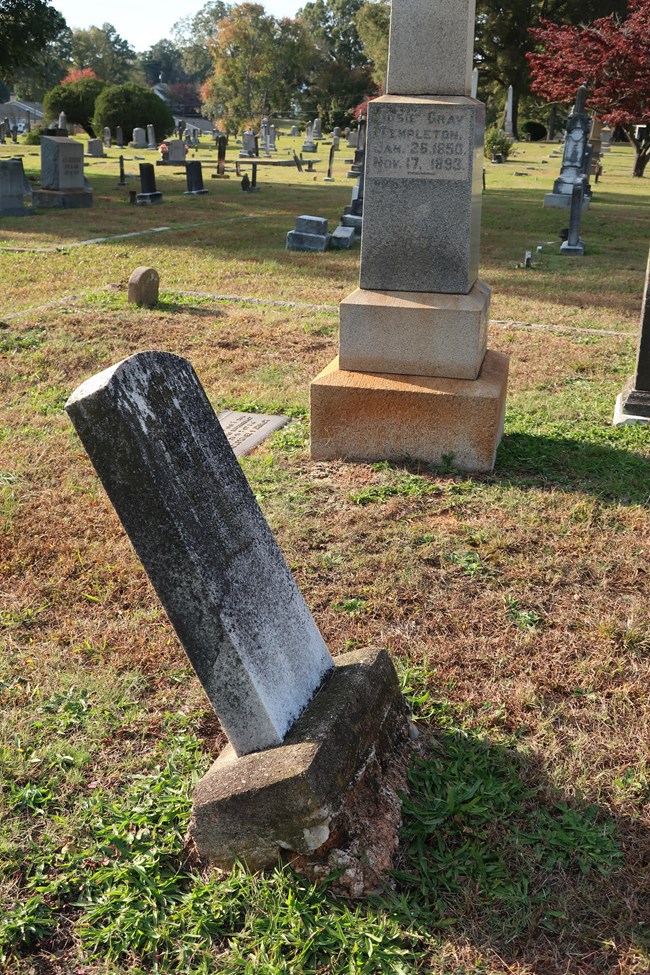
Jason Church, NPS
Guidelines
First, always get permission from the cemetery before doing any work in the cemetery or on any memorial. There is no “Good Samaritan” rule in preservation.
The second rule is, never set or reset a government-issued headstone in concrete; they are intended to be ground supported and should remain that way. Decades of experience has proven that setting headstones in concrete (called “puddling”) or pouring concrete around a set marker (called “col-laring”) does not ensure that it will stay upright. Many factors can make an upright headstone shift, including flooding, poor drainage, shifting soils, coffin decay, burrowing animals, vandalism, and freeze-thaw. A ground supported headstone can be reset easily. A headstone set in concrete is more prone to snapping at the base, and the extra weight makes resetting difficult. A headstone cannot be separated from a concrete collar without damaging the marble or granite material. There are two basic types of upright government issues headstones that reflect different eras of military service: The “General” headstone was introduced in the 1920s to distinguish modern military service—World War I era service to the present. It measures 13” wide x 42” long x 4” thick and weighs approximately 230 pounds. Recessed shield-style headstones (used for all Veteran burials prior to the 1920s and currently used for Veterans of the Civil and Spanish-American wars) measure 10”- 13” wide x 39-42” long x 3” thick and weighs approximately 124-173 lbs., depending on size. Prior to April 1941, the headstone material was exclusively marble, since that time headstones may be provided as marble or granite. These two types of headstones should be set at different heights.
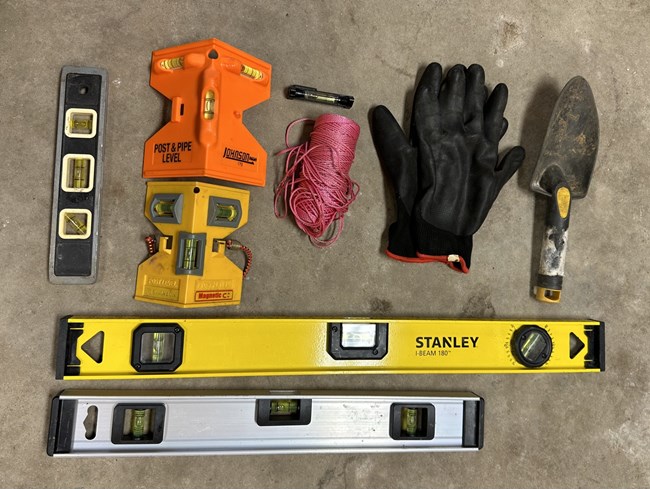
Jason Church, NPS
Equipment Needed
• Tarp• Gloves
• Shovel
• Tamping iron
• Wooden 2”x4” for tamping
• Level
• Post Level
• Line level
• Mason’s string
• Stakes
Safety
Lifting equipment may or may not be needed to set these headstones. This activity should always be done with at least two people to ensure the safety of both workers and headstones. Workers should always wear gloves to protect against broken glass that is often found in cemeteries and other hazards. Steel toe boots are recommended when moving stones.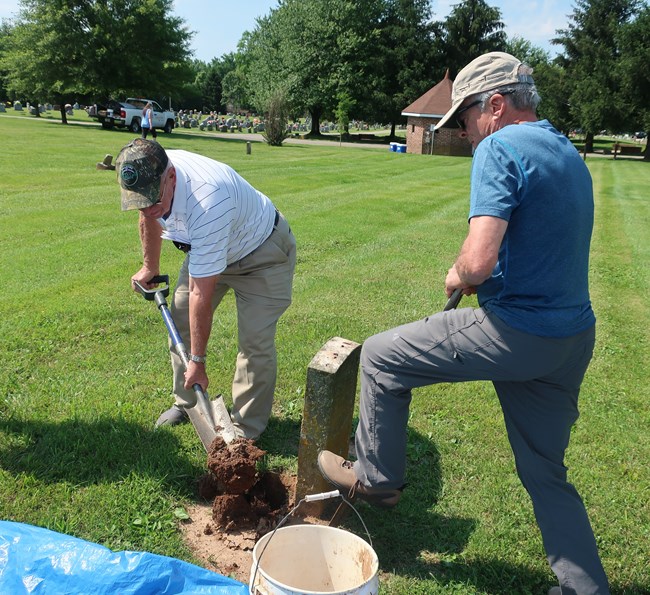
Jason Church, NPS
Preparing the Hole
When setting a new headstone, a hole should be dug slightly larger than what is needed, keeping in mind that 18” of the headstone needs to be set in the earth. Before digging, lay out a tarp to place the dirt and any sod removed; this makes it easier to put it back in the hole and helps keep the cemetery clean.
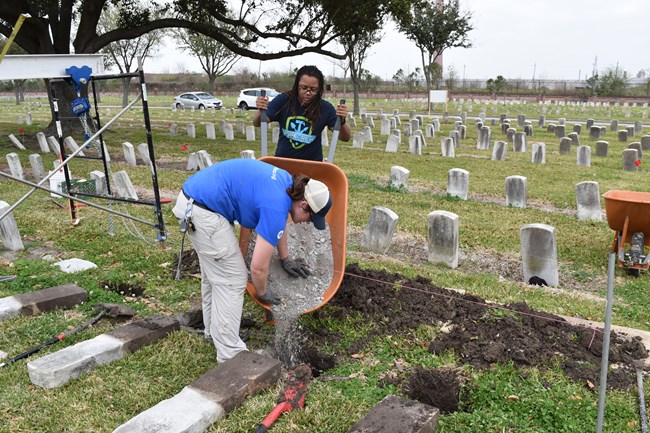
Jason Church, NPS
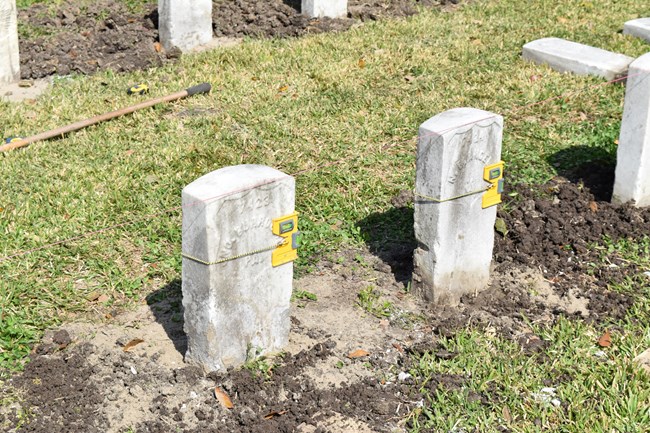
Jason Church, NPS
Setting the Stone
Doublecheck: Make sure the inscription faces the proper direction, i.e., the same direction as those adjacent to it. Ensure the face of the headstone is plumb to its neighbors. The General-type headstone should be 24” above ground, from grade to top of the arch. The height of Civil War and Spanish American War headstones will vary depending on the length of the stone, keep in mind that the VA states that 18” of the stone should be set into the ground. A bubble level must be used to make sure the headstone is straight in both directions; a post level works very well for this.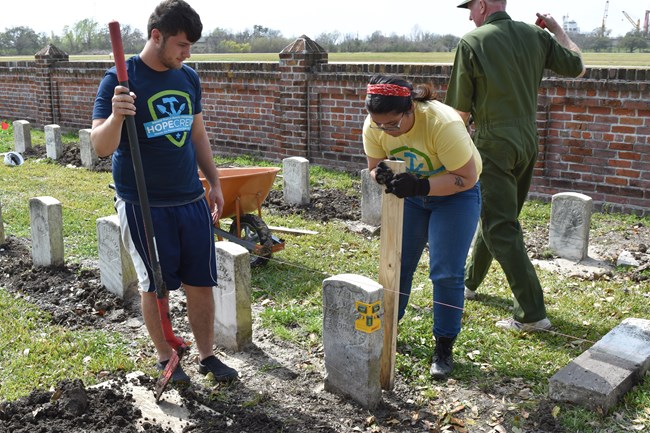
Jason Church, NPS
The dirt that was removed should be slowly added back to the hole a few inches at a time and tamped tight around the stone. Only use a short length of wooden 2”x4” to tamp; never use metal close to a headstone as contact will damage the stone. Every few inches of tamped fill, the level should be checked to assure the stone is plumb and level. After the dirt has been replaced, any sod that was removed should be replaced.
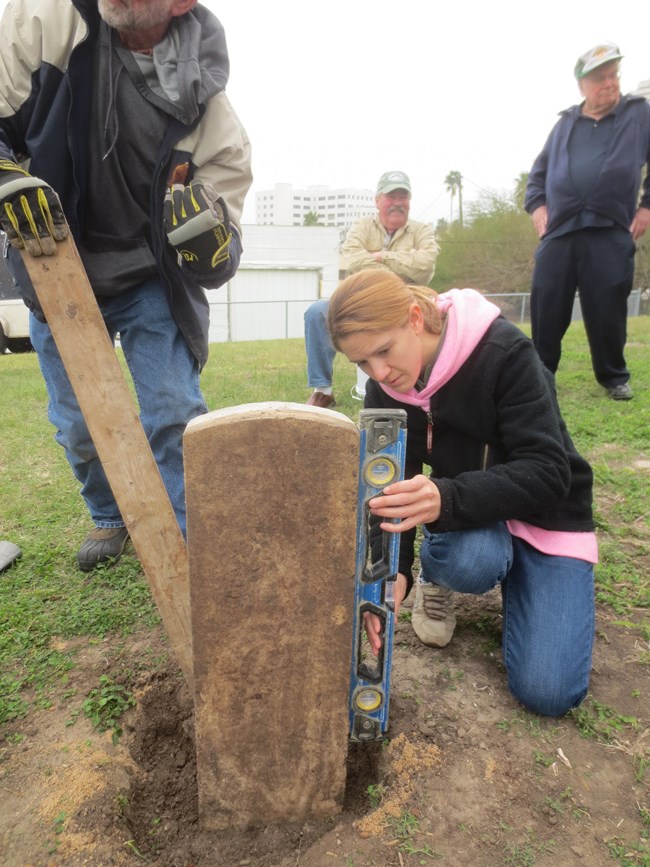
Jason Church, NPS
Resetting a Stone
To reset a headstone, it must be dug out and removed before resetting can begin. Great care must be taken when digging out a sunken, fallen, or leaning stone. Never dig any closer than 2” from the headstone, as any shovel strike could damage it. If a stone is leaning severely, dig deep enough to set the stone back in the opposite direction as the lean. Occasionally the hole must be dug quite deep to remove a sunken headstone. Make sure to continue to dig and remove dirt from around the stone until it can be easily moved around by hand. After the headstone has been removed follow the previ-ous instructions to set the stone back properly. If the headstone is still surrounded by dirt and/or tree roots and is forced into vertical alignment, it could break.Finishing the Job
Once the headstone is set or reset it should be cleaned with a soft, natural bristle brush, water, and D/2 Biological Solution or similar cleaner.
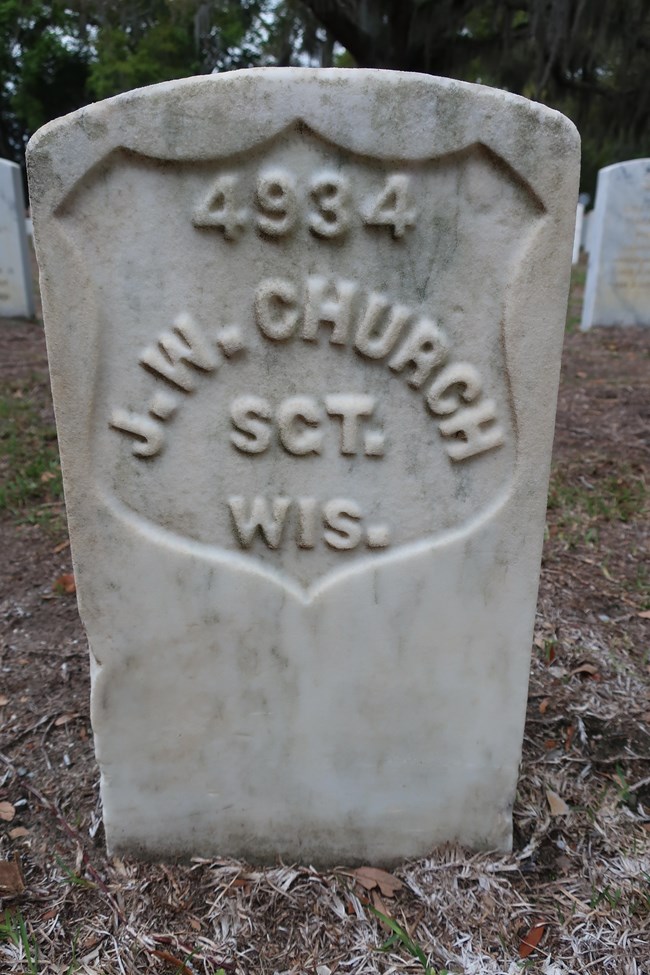
Jason Church, NPS
Example of Resetting
Please see the downloadable PDF for more examples.
Author and Editor
Author: Jason Church, Chief of Technical Services,NCPTT
Series Editor: Kirk A. Cordell, NCPTT Executive Director
Cover Photo: Jason Church, NPS
About NCPTT
The National Center for Preservation Technology and Training (NCPTT) is a research, technology and training center within the National Park Service. NCPTT publishes its Preservation Matters Series to provide easily accessible guidelines for preserving cultural materials.

